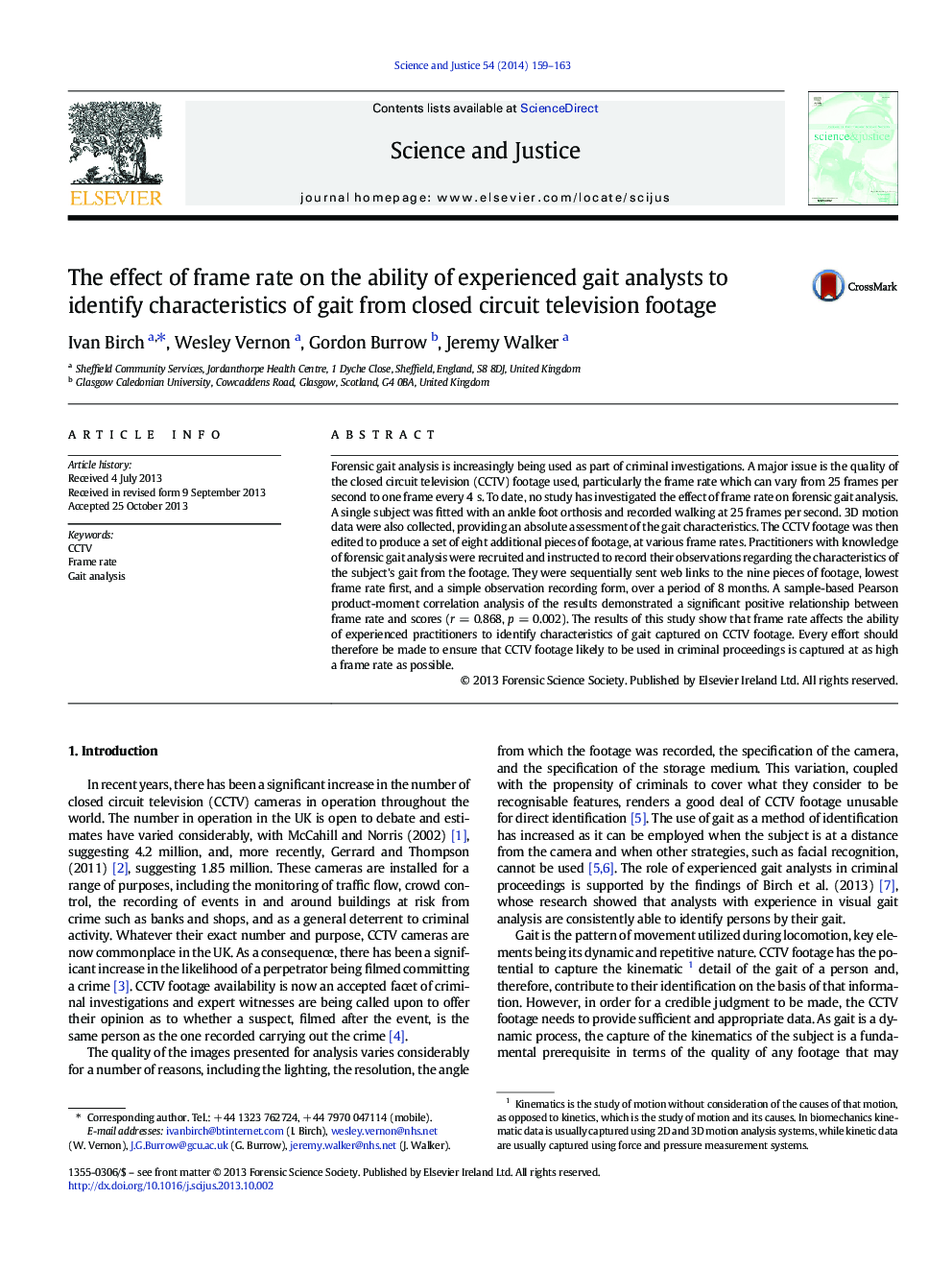| کد مقاله | کد نشریه | سال انتشار | مقاله انگلیسی | نسخه تمام متن |
|---|---|---|---|---|
| 10255552 | 161739 | 2014 | 5 صفحه PDF | دانلود رایگان |
عنوان انگلیسی مقاله ISI
The effect of frame rate on the ability of experienced gait analysts to identify characteristics of gait from closed circuit television footage
ترجمه فارسی عنوان
اثر نرخ فریم بر توانایی تحلیلگران راه رفتن با تجربه برای شناسایی ویژگی های راه رفتن از فیلم های تلویزیونی مدار بسته
دانلود مقاله + سفارش ترجمه
دانلود مقاله ISI انگلیسی
رایگان برای ایرانیان
کلمات کلیدی
دوربین مدار بسته، نرخ فریم، تحلیل ظاهر،
موضوعات مرتبط
مهندسی و علوم پایه
شیمی
شیمی آنالیزی یا شیمی تجزیه
چکیده انگلیسی
Forensic gait analysis is increasingly being used as part of criminal investigations. A major issue is the quality of the closed circuit television (CCTV) footage used, particularly the frame rate which can vary from 25 frames per second to one frame every 4 s. To date, no study has investigated the effect of frame rate on forensic gait analysis. A single subject was fitted with an ankle foot orthosis and recorded walking at 25 frames per second. 3D motion data were also collected, providing an absolute assessment of the gait characteristics. The CCTV footage was then edited to produce a set of eight additional pieces of footage, at various frame rates. Practitioners with knowledge of forensic gait analysis were recruited and instructed to record their observations regarding the characteristics of the subject's gait from the footage. They were sequentially sent web links to the nine pieces of footage, lowest frame rate first, and a simple observation recording form, over a period of 8 months. A sample-based Pearson product-moment correlation analysis of the results demonstrated a significant positive relationship between frame rate and scores (r = 0.868, p = 0.002). The results of this study show that frame rate affects the ability of experienced practitioners to identify characteristics of gait captured on CCTV footage. Every effort should therefore be made to ensure that CCTV footage likely to be used in criminal proceedings is captured at as high a frame rate as possible.
ناشر
Database: Elsevier - ScienceDirect (ساینس دایرکت)
Journal: Science & Justice - Volume 54, Issue 2, March 2014, Pages 159-163
Journal: Science & Justice - Volume 54, Issue 2, March 2014, Pages 159-163
نویسندگان
Ivan Birch, Wesley Vernon, Gordon Burrow, Jeremy Walker,
